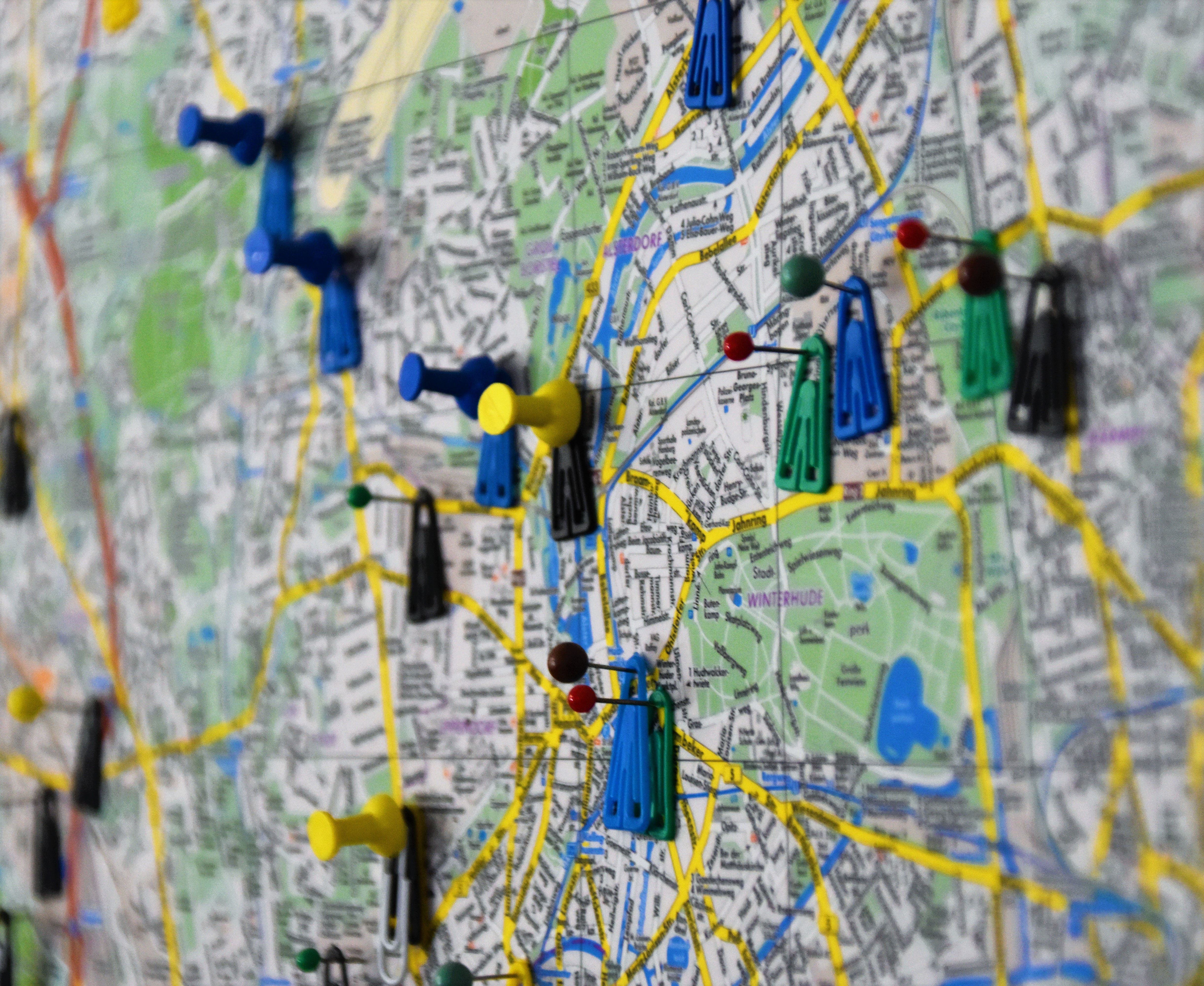Imagine that you’ve just opened a women’s boutique and created a shopping app for it. People may not open the applications on a regular basis, but they will undoubtedly notice the notifications. So what if the app pushes notifications to every person who has downloaded your app, enters or crosses by your store, and lets them know about the discounts that you are offering? Isn’t it great?
The technology used here by the boutique owner is known as Geo-fencing. Let’s know more about it.
Geofencing is a location-based technology in which an application or other program utilizes GPS, RFID, Wi-Fi, or cellular data to activate a pre-programmed event when a smartphone or RFID tag enters or departs a geofence, which is a virtual barrier set up around a geographical area.
Depending on that, it also pushes mobile notifications, triggers text messages or alerts, sends targeted advertisements on social media, allows tracking on vehicle fleets, disables certain technology, or delivers location-based marketing data.
How does Geo-fencing work?
To implement geofencing, an admin or developer must first create a virtual border around a specific area in GPS- or RFID-enabled software, that might be as basic as a 100-foot circle created on Google Maps.
This virtual geofence will then trigger a response when an authorized device enters or exits that area, as specified by the administrator or developer.
For example, If you’re using geofencing technology, you can send push notifications and an automated text message to your customers and let them know about a sale you’re having, what’s new in your store, or just reminding them about the new festival offers that is about to start when they’re in your geofence location.
Geofencing is used to regulate and track cars in the transportation sector, animals in the agriculture industry, and - you'll see this concept show up in drone conversations. Almost every drone is pre-programmed to support geofencing, which is commonly used near airports, open-air venues, and even the White House.
The FAA (Federal Aviation Administration) can set up these drone-resistant geofences upon request – some barriers will stop a drone in mid-air, while others will trigger a warning message to the user. Some drone geofences will request a user's authorisation — a procedure that associates the user's identity with their drone – so that law enforcement can follow unmanned drones.
Let’s take a look at how Geo-fencing works in marketing?
Geofencing marketing, also known as geofencing advertising, is a sort of location-based marketing that connects you with mobile phone users in a certain geographic region, such as a store, via mobile applications or mobile web sites.
When a mobile device reaches this region, the geofence can initiate a variety of activities. Typically, these triggers involve the transmission of some form of advertisement. Earlier, it was via SMS, but now it uses push notifications which fit seamlessly into the programmatic advertising stack.
Geofencing has become the easiest way of marketing. For example, if you’re having a sale on jeans, and someone with your app walks by, a push notification will appear that lets them know about your sale, which can increase your product’s sales and increase your footfall.

How can you focus on your specific customers?
Assume you operate a seafood restaurant. A couple goes down your street looking for the greatest crab legs in town.
You know you’re one of the few seafood restaurants in the area, and you want to target the keyword “crab legs” in your ads.
Geofencing technology is used by your business to place a box around a 3 block radius throughout every direction from your position. This appears to mean that your ads are shown to customers who search for keywords that are relevant to your business while they are nearby.
However, just because you utilize particular keywords in your campaign somehow doesn't guarantee that your clients will see your advertising.
You must first decide how much you are ready to spend when someone clicks on your ad that targets a certain keyword; if you pay less than your rivals, your ad will not be seen by passersby.
So, in a nutshell, geofencing distributes advertising to your target clients inside your invisible barrier if you outbid your competitors on a given term.
What can you do with better Geo-fencing?
The following pointers will assist you in establishing a successful Geofencing strategy:
- Data collection is key. Prior to beginning a campaign, make sure to aggregate as much contextually relevant data as possible.
- Avoid a one size fits all mindset. Not everyone who enters a Geofence is a desirable candidate. Define your audience and then segment them (and then segment them again).
- There is no alternative for originality and, ultimately, knowing your target audience. All of the technology in the world will not be able to correct a badly written message.
For any marketing campaign to be successful it is important that you are aware of the kind of customers you are planning to campaign for.
Geofencing can actually help you get a better understanding of the audience that you are targeting since it is a location-based technology that can bring you a whole lot of data about the consumers, which you can further use to enhance the understanding of your users’ behavior.
You may track a variety of metrics such as the number of times they have visited your stores, the frequency of their visits (once a week, once a month, etc.), and even the kind of locations they visit before dropping by your store.
With better accuracy and a slightly different approach, you can use location to achieve convincing results. Let’s see how.
Geofencing is being used for more than just tracking where a target consumer (or a herd of sheep) is at any one moment. With privacy concerns compelling businesses to reconsider their usage of geofencing, startups such as Radar are pioneering new ways for geofences to improve user experience.
Consider Burger King's Whopper Detour Campaign. Burger King launched a campaign in which they sold their Whopper burgers for $0.01 — but only to customers within 600 feet of a McDonald's.
Customers may use the Burger King app to find their nearest McDonald's. When users entered the geofence, the app directed them to their nearest Burger King to redeem the promotion.
This is just one example of how marketers are thinking imaginatively about how to utilize geofencing to surprise and delight customers while not breaching their privacy.
The future of geofencing marketing
The geofencing sector is predicted to increase by more than 27% by 2022, owing to "technology breakthroughs in the usage of geographical data and rising applications in a variety of industrial verticals."
While retail and travel have already invested in geofencing, there is a lot of opportunity for this technology to spread to government, healthcare, and other businesses.
Surprising and delighting consumers is only the first step toward more deliberately incorporating geofencing into practically every area of life. Users will grow to expect, rather than be shocked by, how organizations deploy geofencing over time.
We anticipate that organizations will utilize geofencing more deliberately to send contextually appropriate messages, construct contextual experiences, and more thoroughly comprehend location data.


